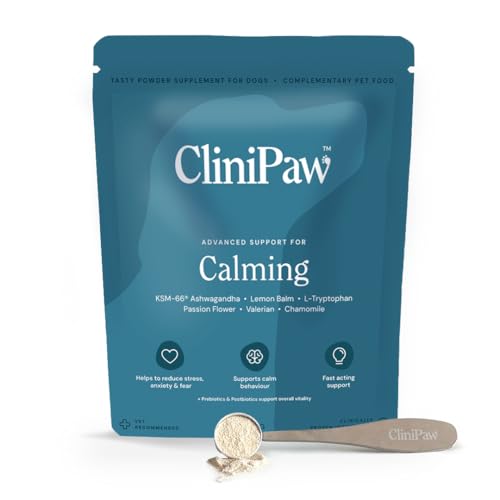


Adding a new four-legged friend can significantly enhance the life of an existing canine companion. Having observed my own pet’s behaviour, it became evident that social interaction with another animal can alleviate loneliness and boredom. Most pets thrive on companionship, and introducing a playmate might just be the solution to a more enriched and active lifestyle.
When I welcomed a second furry family member, I noticed a marked improvement in my first pet’s mood and energy levels. They engaged in playful antics, explored the yard together, and even napped side by side. This new dynamic not only stimulated their curiosity but also fostered a deeper bond between them. Research indicates that social animals often exhibit fewer behavioural issues when they have a companion, as they can channel their energy into play rather than mischief.
Before proceeding with this decision, consider the temperament and energy levels of both animals. A compatible match is vital; a highly energetic breed might not mesh well with a more laid-back counterpart. Assessing these traits can prevent potential conflicts and ensure a harmonious household. Observing the initial introductions in a neutral space can also help gauge their interactions and ease the transition.
In essence, the addition of a fellow creature can bring joy, companionship, and plenty of fun into your home. It’s worth exploring whether this step aligns with your lifestyle and the needs of your current pet.
Assessing Your Current Canine’s Temperament
Observe behavioural traits closely before deciding to introduce a new companion. Understanding how your existing pet interacts with others is essential. Here are key aspects to evaluate:
- Socialisation: Is your furry friend comfortable around other animals? Regular interactions can indicate readiness for a new pal.
- Playfulness: An energetic pet may thrive with a playmate, while a more reserved one might prefer solitude.
- Resource Guarding: Take note if your canine shows possessiveness over toys or food. This can lead to conflicts with newcomers.
- Training Level: A well-trained companion might adapt more easily to sharing space with another pet. In contrast, an untrained one could struggle.
Monitor reactions to different breeds during walks or at parks. Some may exhibit excitement or anxiety around various types. If your canine demonstrates aggression or fear, consider waiting before adding to your family.
Health is another factor. Any gastrointestinal distress, such as why does my dog have diarrhea after eating wet food, can impact behaviour. Ensure your existing pet is in good condition before introducing another animal.
Taking the time to assess these traits can lead to a harmonious household. An informed decision can enhance the well-being of both pets and their human companions.
Choosing the Right Breed for Compatibility
Opt for breeds known for sociability and adaptability. Breeds like Labrador Retrievers, Golden Retrievers, and Beagles typically interact well with their peers. Their friendly demeanour often eases introductions and fosters harmonious relationships.
Consider size differences. A smaller breed may not thrive with a larger, more boisterous companion. For instance, a gentle Cavalier King Charles Spaniel might feel overwhelmed by a spirited German Shepherd. Assessing size helps prevent unintentional stress and ensures safety during playtime.
Energy Levels
Match energy levels to enhance compatibility. Active breeds, such as Border Collies or Australian Shepherds, require plenty of exercise, while more laid-back options like Basset Hounds or Bulldogs prefer a relaxed environment. Pairing an energetic breed with a low-energy one may lead to frustration for both parties.
Temperament Traits
Look into specific traits associated with each breed. Some breeds have strong herding instincts, while others are more independent. For example, a herding breed might try to assert dominance over a passive companion, leading to conflicts. Understanding these traits aids in selecting a harmonious pair.
Introducing a New Canine: Steps to Follow
Begin the introduction by allowing both canines to meet in a neutral territory. Choose a park or a friend’s yard, avoiding home turf to prevent territorial behaviour. Keep both companions on leashes to maintain control during this initial encounter. Observe their body language closely; signs of excitement or curiosity can indicate a positive start.
Gradual Familiarisation
After the first meeting, schedule short playdates to help build their bond. Start with 20 to 30 minutes of interaction, gradually increasing the duration as they become more comfortable. Ensure that each session ends on a positive note, with plenty of praise and rewards. This will help create a positive association with each other.
Establishing Boundaries and Resources
Prepare your living space by providing separate areas for each canine, including individual beds and feeding stations. This prevents competition and creates a sense of security. Monitor interactions closely, especially during meal times and play sessions, to ensure that both companions feel safe and respected. Reinforce good behaviour with treats and praise to encourage positive interactions.
Managing Resources: Space, Food, and Attention
Ensure ample room for multiple canines to roam freely. A cramped environment can lead to stress and territorial disputes. Consider designating separate areas for each animal, especially during meal times or rest periods, to promote harmony. A spacious garden or nearby park can be ideal for outdoor play. Regular walks can also help burn off excess energy, keeping everyone content.
Food Distribution
Establish a clear feeding routine and portion control. Each canine should have its own designated feeding area to prevent competition and potential aggression over food. Monitor their meals to maintain a healthy weight and avoid overeating. It’s advisable to consult a veterinarian regarding dietary needs, especially if one of the canines has specific requirements.
Allocating Attention
Invest time in one-on-one interactions with each pet. Rotating play sessions can help prevent jealousy and ensure both receive adequate affection. Recognising individual personalities and needs is key; some may crave more interaction, while others may prefer solitude. Observing behaviour can guide you in balancing attention effectively.






